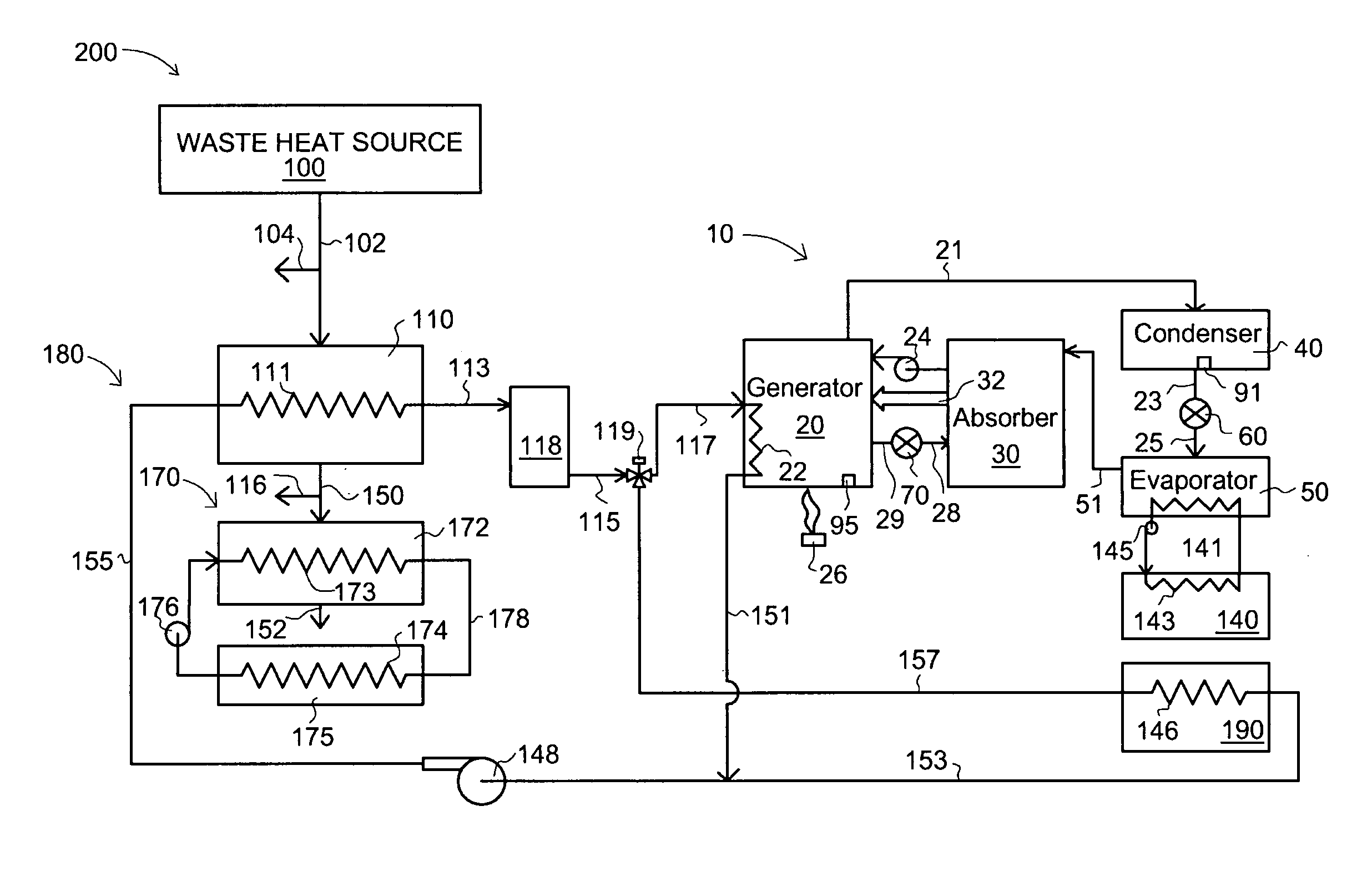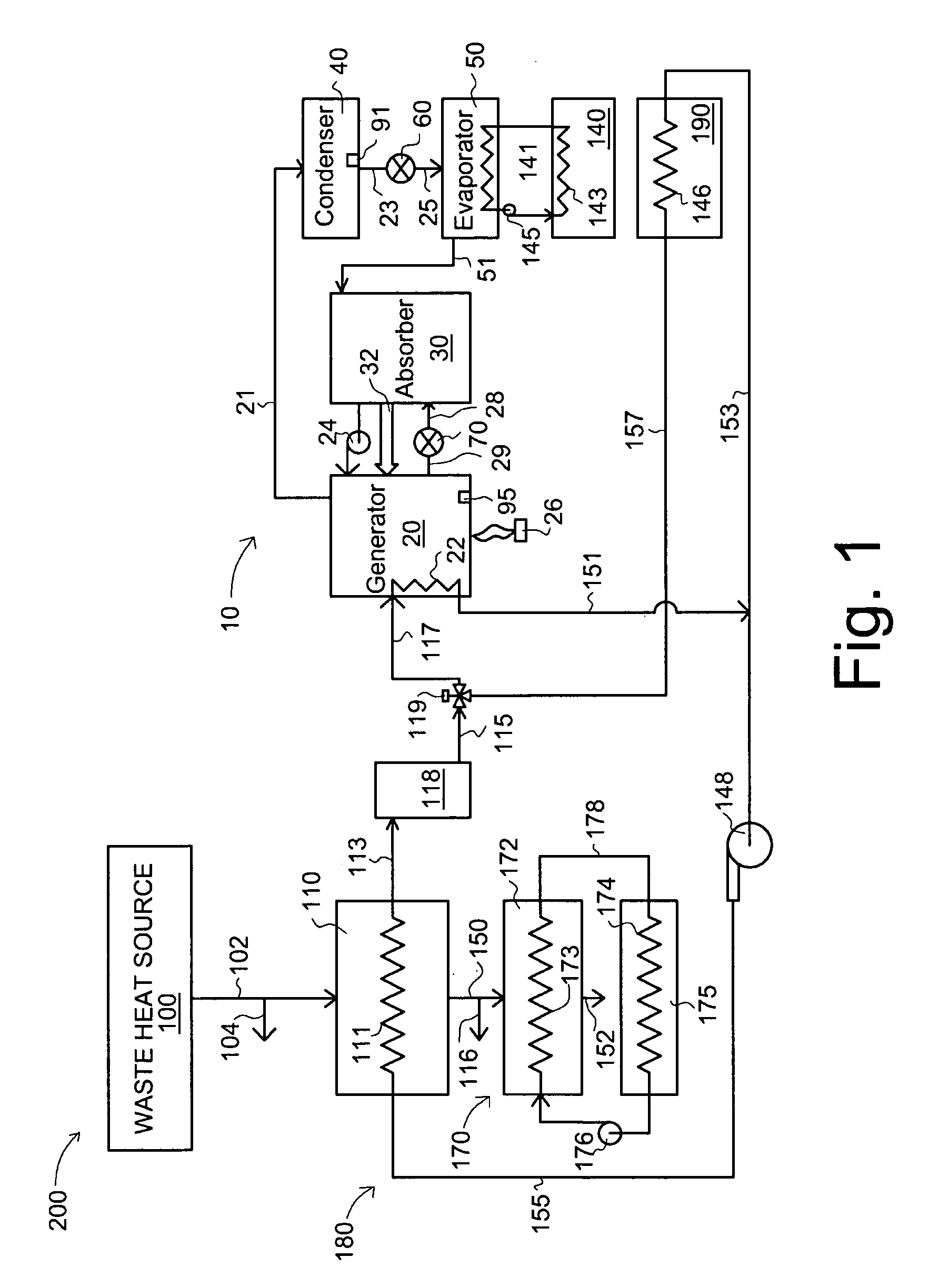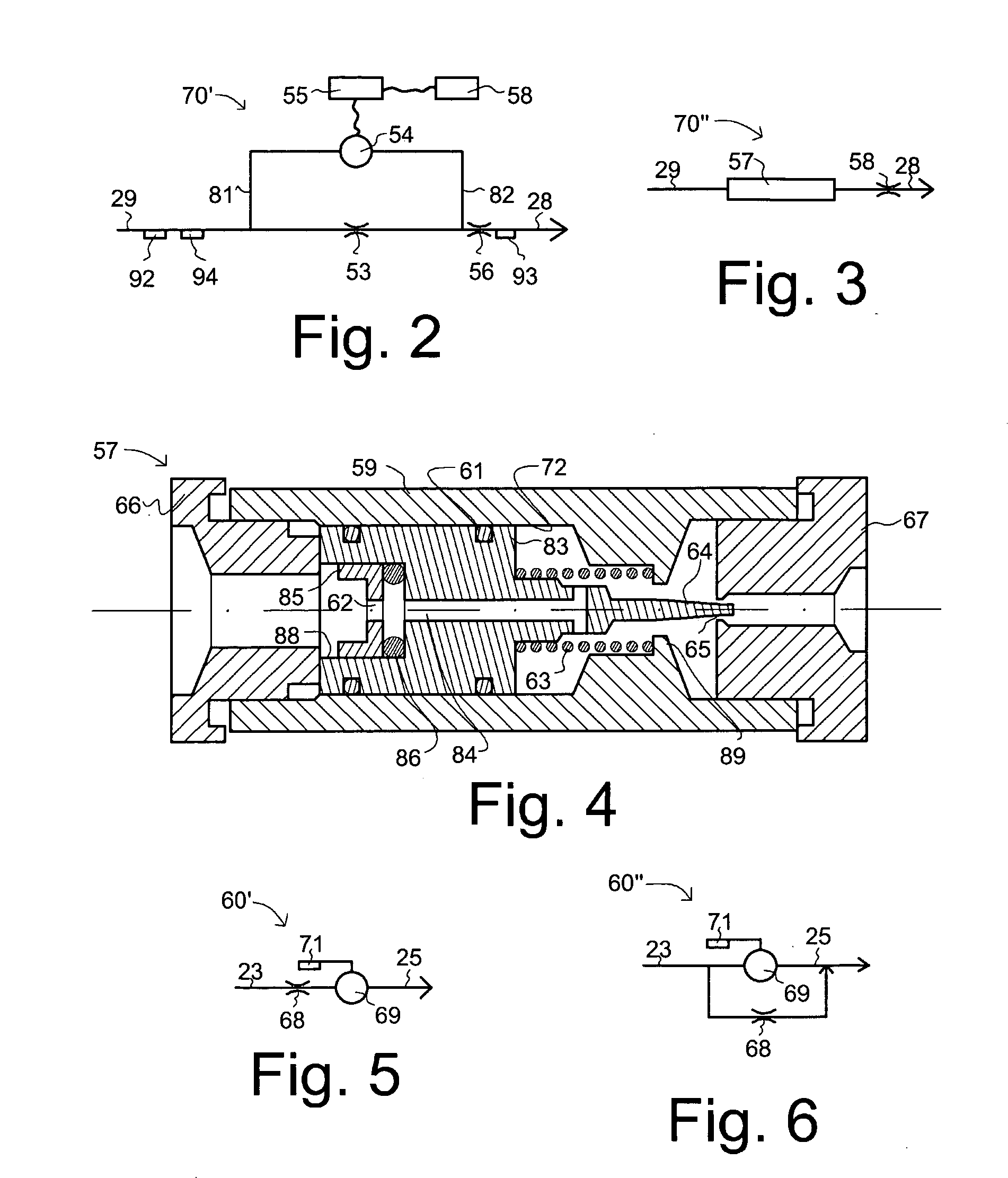Absorption heat-transfer system
a heat exchange system and heat exchange technology, applied in the operation mode of machines, refrigeration components, lighting and heating apparatuses, etc., can solve the problems of limited flow rate of heat exchange machines, limited waste heat recovery system, and inability to recover waste heat, so as to reduce the inlet pressure
- Summary
- Abstract
- Description
- Claims
- Application Information
AI Technical Summary
Benefits of technology
Problems solved by technology
Method used
Image
Examples
Embodiment Construction
[0038] With reference to the drawings and initially FIG. 1, a waste-heat recovery, heat-transfer device 200 comprises an absorption heat-transfer machine 10 for operation by means of a waste heat source 100 at working-solution (solution pair) temperatures in generator 20 of greater than 250° F. (121° C.). In its basic form, the absorption heat-transfer machine 10 comprises an interconnected generator 20, an absorber, 30, a condenser 40, and an evaporator 50. Expansion (flow control) devices 60, 70 control the flow of fluids from a high pressure to a low pressure component Specifically flow control device 60 controls the flow of refrigerant from the high-pressure condenser 40 to the low-pressure evaporator 50. Flow control device 70 controls the flow of weak solution from the high-pressure generator 20 to the low pressure absorber 30. Solution pump 24 provides strong solution from the absorber 30 to the generator 20.
[0039] In operation, a high-temperature solution pair (also here te...
PUM
 Login to View More
Login to View More Abstract
Description
Claims
Application Information
 Login to View More
Login to View More - R&D
- Intellectual Property
- Life Sciences
- Materials
- Tech Scout
- Unparalleled Data Quality
- Higher Quality Content
- 60% Fewer Hallucinations
Browse by: Latest US Patents, China's latest patents, Technical Efficacy Thesaurus, Application Domain, Technology Topic, Popular Technical Reports.
© 2025 PatSnap. All rights reserved.Legal|Privacy policy|Modern Slavery Act Transparency Statement|Sitemap|About US| Contact US: help@patsnap.com



